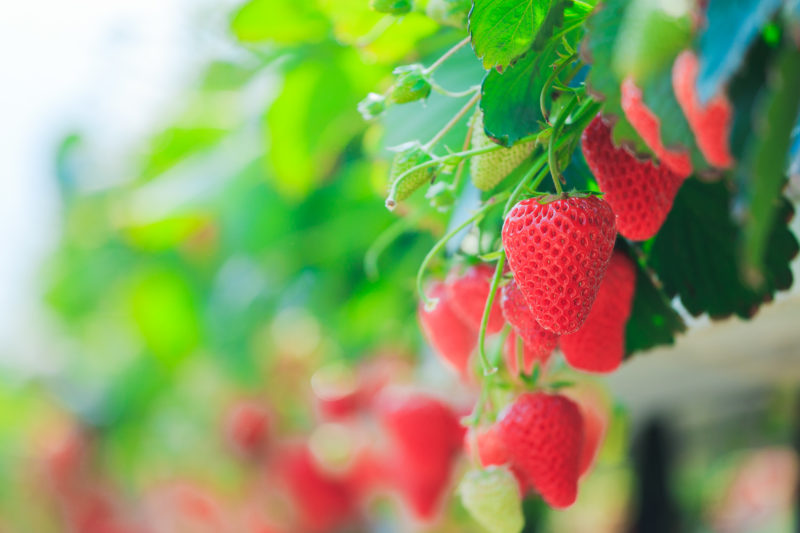SiONEER and Crop Pest Control
A recently published technical white paper on SiONEER amorphous silicon dioxide in strawberry production provides promising research for the California Strawberry Commission. The white paper highlights the potential for increased plant health and stress resistance, and reductions in pests and chemical pesticide use in the strawberry industry.
Strawberries: A 2.8 Billion Dollar Industry
The United States is currently the world’s largest producer of strawberries, with California leading the nation in 80-85% of total crop growth. Strawberries are also one of the highest value per-acre crops grown in all of North America. In 2014 alone, the U.S. produced 3 billion pounds of strawberries and was valued as a 2.8 billion dollar industry.
However according to the California Strawberry Commission, while strawberries are a very lucrative and successful crop, they are also one of the most challenging to grow. A multitude of soil and pest issues plague strawberry farmers, and the need for chemical free pesticides is at an all time high.
Some of the many complexities farmers are facing include soil and pest management against arthropods, soil-borne pathogens, fungal and bacterial diseases, insect viral diseases, weeds, and surrounding wildlife. There are over 200 species of arthropods found on strawberries alone, and even the most minor dips in production due to pests have lasting economic effects.
SiONEER Amorphous Silicon Dioxide
The increased use of pesticides to combat plagued strawberry crops has widened public concern over the potential hazardous effects of chemicals on human consumption, air quality, and wildlife safety. As stricter environmental and public health regulations are implemented, certain chemical pesticides are being banned from use.
A promising solution for the strawberry industry is the use of amorphous silicon-based products, which have proven to be suitable alternatives to chemical insecticides in farming as they are residue- free, effective against chemical-resistant species, and are typically very persistent. While widely accepted and useful substitutes to toxic pesticides like diatomaceous earth [DE] contain small amounts of naturally occurring crystalline silicon oxide, SiONEER’s organic replacement contains virtually none and has no toxic side effects on mammals.
According to the white paper on SiONEER amorphous silicon dioxide,
“The incorporation of SiO2 [amorphous silicon dioxide] into production practices such as field preparation of soils via dusting or solution application throughout the growing process may lead to alleviation of climatic, biotic and abiotic stresses while increasing pollen fertility during strawberry plant flowering. In either case, eradication or increased resistance to pests, albeit insect, pathogen, ect. by SiO2 may provide increase yield and economic viability in strawberry cropping.”
California Strawberry Commission
The California Strawberry Commission is currently evaluating the technical white paper as they attempt to research new solutions to address the variety of challenges from insects and diseases that plague the strawberry cropping industry. Alternatives to chemical pesticides like SiONEER products could provide a new protective solution to strawberry crops that are less hazardous, meet stricter environmental and public health regulations, and do not carry negative societal pesticide perceptions.
Future scientific testing will pave way to the proper use and application of SiONEER amorphous silicon dioxide for the industrial farming market as a whole.
